ABC premiered 10 new shows in the fall of 1974, including That’s My Mama, Nakia, The Sonny Comedy Revue, Harry-O, Paper Moon, and Kolchak: The Night Stalker. A pair of the network’s new shows (The Texas Wheelers and Kodiak) had the dubious distinction of being the first cancellations of the 1974-1975 season.
NOTE: No new Monday or Tuesday programming was introduced by ABC during the fall of 1974.
Wednesday Evening
ABC introduced That’s My Mama, a sitcom focusing on the lives of African-American family living in Washington, DC, on September 4th, the week before the networks unveiled the bulk of their new and returning programming. The series was said to be “key” to ABC’s Wednesday night, so it was given an early debut where it would air against repeats on CBS and NBC, a strategy that all but guaranteed it would draw an audience [1]. Based on preliminary Nielsen numbers, which gave the premiere a 20.0/38 rating, the strategy worked [2].
Critics, though, loathed the series. “About the only good thing to be said for ‘That’s My Mama,” wrote John J. O’Connor in his review for The New York Times, “is that it provides employment opportunities for several talented black actors” [3]. Its 8-8:30PM time slot had it competing with two other new shows: Sons and Daughters on CBS and the new Little House on the Prairie on NBC.
Clifton Davis starred in That’s My Mama as Clifton Curtis, a young, single man who took over the family barbershop upon the death of his father. To make things convenient, the barbershop was connected to the family home. Clifton was content with his carefree bachelor lifestyle and his job. His mother, Eloise "Mama" Curtis (Theresa Merritt), nevertheless dearly wished her son could find a wife, the same way her daughter Tracy (Lynne Moody) had found engineer Leonard Tylor. Co-stars included Theodore Wilson as postman Earl Chambers, Jester Hairston as Wildcat, DeForest Covan as Josh and Ted Lange as Junior. That’s My Mama would return in 1975, but only lasted until December of that year.
The other ABC offering on Wednesdays was Get Christie Love!, which in its 10-11PM time slot also aired opposite two other new shows: The Manhunter on CBS and Petrocelli on NBC. The series, which was preceded by pilot telefilm broadcast in January 1974, starred Teresa Graves as Detective Christie Love, pocketbook-toting and television’s first African-American policewoman. It premiered on September 11th.
Charles Cioffi appeared as Love’s boss, Lieutenant Matt Reardon, while Andy Ramano, Dennis Rucker and Scott Peters played other detectives. Most of Love’s cases were undercover but she had a real problem waiting for backup. The characters of Reardon and Detective Joe Caruso (played by Andy Ramano) were dropped in January 1975, to be replaced by Jack Kelly as Captain Arthur P. Ryan and Michael Pataki as Sgt. Pete Gallagher.
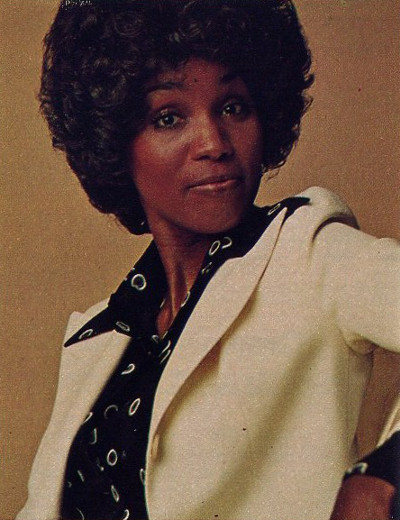
Copyright © TV Guide, 1974 [1]
Get Christie Love! was also not well received by critics, although Graves was given credit for her work. Reviewing the series for The Washington Post, Jean M. White declared “the writers try to combine sitcom with police action and don’t do a very good job of either” [4]. The series lasted the entire season, with the last first-run episode airing on April 4th, 1975. It was moved to Fridays at 10PM in April; repeats would air through mid-July.
Thursday Evening
There were two new ABC programs on Thursdays. Paper Moon aired from 8:30-9PM opposite the second half of The Waltons on CBS and Sierra (a new show) on NBC. The series was based on the award-winning 1973 movie of the same name starring Ryan and Tatum O’Neal, which in turn was based on a 1971 novel, Addie Pray, written by Joe David Brown. Jodie Foster played Addie, a young orphan, and Christopher Connelly played Moze, a con-man.
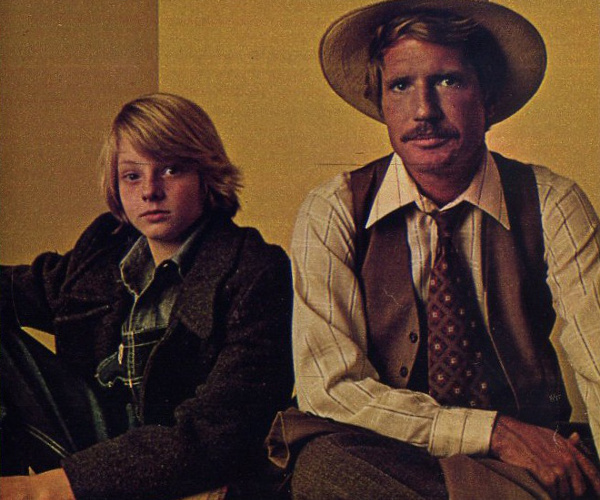
Copyright © TV Guide, 1974 [2]
The two crisscrossed the 1830s Midwest in their roadster, with Moze attempting to sell bibles and Addie following along out of a misplaced belief that Moze was her father. Critics focused on the shift in tone from big screen to small, with Jack Anderson of the Miami Herald arguing that “the electricity, the almost nihilistic relationship of the father and daughter in the movie is softened for the TV version” [5. Paper Moon premiered on September 12th and ran for 13 episodes before succumbing to low ratings [6]. It was off the air in mid-December.
The other ABC series, Harry O, aired from 10-11PM, against NBC’s Movin’ On (a new series) and the second half of The CBS Thursday Night Movies. Two made-for-TV movies preceded the series. The first, Such Dust As Dreams Are Made On, aired March 11th, 1973 and co-starred Martin Sheen. The second, Smile Jenny, You’re Dead, aired February 3rd, 1974 and co-starred Jodie Foster.
David Janssen played the title character in both movies and the series. Harry Orwell is a police officer forced to retire after being shot in the back. The bullet was lodged next to his spine, too close to be removed and caused Harry constant pain. He lived on a San Diego beach and supported himself by dabbling in private investigation, taking low-paying cases whenever they popped up. Unable to afford a fancy car or even fix the one he had, Harry usually took the bus.
Some critics panned the premiere’s storyline but most lauded Janssen. John Carmody of the Washington Post was an exception, writing “the viewer is never sure whether Janssen is wise cracking or just proving he’s still awake” [7]. Harry O premiered on September 12th. The series returned for a second season but was cancelled at the end of the 1975-1976 season. Forty-four episodes were broadcast.
Friday Evening
All three of the new ABC shows on Fridays premiered on September 13th/ The first, Kodiak, was a half-hour drama airing from 8-8:30PM, where it competed with a new CBS series, Planet of the Apes, and NBC’s powerhouse Sanford and Son. The series told the story of Cal “Kodiak” McKay, played by Clint Walker (formerly of the Western Cheyenne). McKay, a member of the Alaska State Patrol, was in charge of 50,000 square miles of terrain and everything that went on within it.
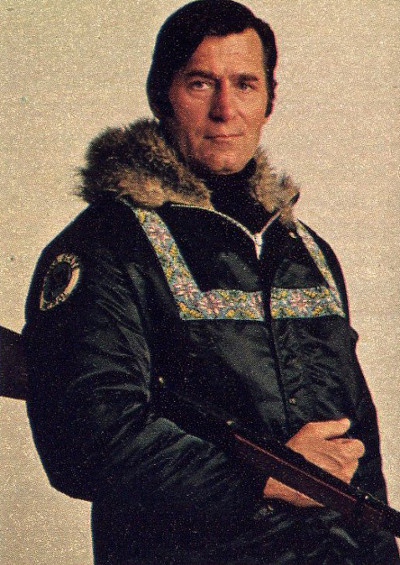
Copyright © TV Guide, 1974 [3]
Also appearing were Maggie Blye as Mandy, the Alaska State Patrol dispatcher, and Abner Biberman as Abraham Lincoln Imhook, an Eskimo who helped out Kodiak. Critics savaged Kodiak and its star. Wrote the Chicago Tribune‘s Gary Deeb: “There’s a minimum of dialogue, which is a plus for a dramatic zombie like Wakler. Even at that, however, Clint plays fourth fiddle to a snowmobile, an airplane, and a fire hose” [8]. Kodiak was cancelled less than a month after its premiere [9]. Only five episodes were aired; the final episode was broadcast on October 11th.
ABC’s second new Friday entry was The Texas Wheelers, which aired from 9:30-10PM opposite a portion of The CBS Friday Night Movies and NBC’s The Rockford Files. The premise was simple: four motherless children are forced to live on their own when their father abandoned then. Some years later the father returns. The series starred Jack Elam as Zack Wheeler, the father. Gary Busey played 24-year-old Truckie, the oldest child who took charge of the family during their father’s absence.
Mark Hamill, who would later skyrocket to fame in Star Wars, played 16-year-old Doobie. Karen Oberdiear played 12-year-old Boo and Tony Decker portrayed 10-year-old T.J. Lisa Eilbacher appeared as a friend of Boo’s named Sally, Dennis Burkley played Bud, and Bruce Kimball played Lyle. Several critics praised the series for its unique take on family. John J. O’Connor called the series “the perfect antidote for the old hangovers trailing much of what is called ‘warm family drama'” [10]. Like Kodiak, The Texas Wheelers was cancelled in mid-October [11]. During the summer repeat season, six additional episodes were aired, starting Thursday, June 22nd, 1975 at 8:30PM.
The final Friday series, Kolchak: The Night Stalker, ran from 10-11PM opposite Police Woman on NBC and the second half of The CBS Friday Night Movies. Like Harry O it was based on two made-for-TV movies: The Night Stalker (originally broadcast January 11th, 1972) and The Night Strangler (originally broadcast January 16th, 1973). Both starred Darren McGavin as Carl Kolchak, a reporter for the Chicago Independent News Service who constantly ran into paranormal activity, be it vampires, werewolves, zombies or aliens.
The series co-starred Simon Oakland as Tony Vincenzo, Kolchak’s boss, Jack Grinnage as Ron Ypdyke, another INS reporter, Ruth McDevitt as Emily Cowles, a columnist, John Fielder as Gordy Spangler, and Carol Ann Susi as Monique Marmelstein. It was cancelled after 20 episodes, the last of which was broadcast on March 28th, 1975.
In September 2005, ABC premiered an updated version of the series called The Night Stalker. The network cancelled it due to low ratings after airing just six episodes.
Saturday Evening
Two new ABC shows found homes on Saturday. The first, The New Land, premiered September 14th at 8PM. The series followed a family of Swedish immigrants who came to America in 1858 and found a new home in Minnesota. Scott Thomas starred as patriarch Christian Larsen with Bonnie Bedelia as his wife Anna. Todd Lookinland (whose brother Mike played Bobby Brady on The Brady Bunch) was son Tuliff, while Debbie Lytton played daughter Anneliese. Kurt Russell appeared as Christian’s brother Bo.
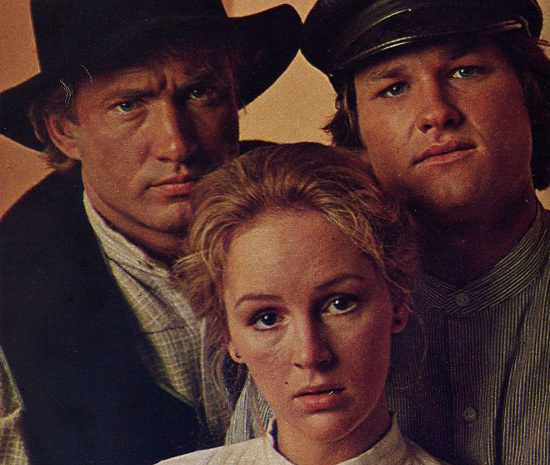
Copyright © TV Guide, 1974 [4]
Critics were fairly universal in their acclaim for The New Land, with many comparing it positively to The Waltons. Cecil Smith, reviewing the series for The Los Angeles Times, wrote that it “seems to catch the rich, grainy earthiness of pioneer life, of clawing a living out of the hard land with the same effectiveness The Waltons mirror the Depression” [12]. Facing stiff competition from All In The Family on CBS and Emergency! on NBC, The New Land faltered and was off the air after just six episodes, the last of which aired on October 19th.
ABC’s second new Saturday series, Nakia, premiered on September 21st, and lasted about two months longer than The New Land. A made-for-TV movie of the same name served as the pilot, airing April 17th, 1974. Robert Forster starred as Nakia Parker, a Navajo deputy sheriff in a tiny New Mexico town.
Arthur Kennedy appeared as Sheriff Sam Jericho, and Taylor Lacher and Gloria DeHaven portrayed Hubbell Martin and Irene James, respectively, two other deputies. Many of the plots relied on Nakia’s native “abilities” (he was able to silently sneak up on someone while wearing his moccasins, for example). Some critics blasted the lead’s acting, like Norman Mark of the Chicago Daily News who wrote “Mount Rushmore shows more changes of expression than Robert Forster” [14].
Nakia was up against The Carol Burnett Show on CBS at 10PM and after thirteen episodes the series was off the air, its last episode airing on December 28th, 1974.
Sunday Evening
ABC only premiered only one new Sunday series: The Sonny Comedy Revue, starring none other than Sonny Bono, recently divorced and fresh from The Sonny and Cher Comedy Hour, which ended its four-season run on CBS in May 1974. It was the only new variety series premiering in the fall of 1974 and only one of two overall (the other was The Carol Burnett Show on CBS).
A number of routines from The Sonny and Cher Comedy Hour, including “Sonny’s Pizza,” were revived for The Sonny Comedy Revue, which introduced many new ones: “Great Lovers,” “The Bono Brigade,” “The Little Man” and “The Bono Italian Family Theatre.” Freeman King, Teri Garr, Peter Cullen, Ted Ziegler, Billy Van, and Murray Langston, all formerly of The Sonny and Cher Comedy Hour, appeared as regulars on the new show. Guest stars included Hank Aaron, Gladys Knight, Jerry Lewis and The Pips.
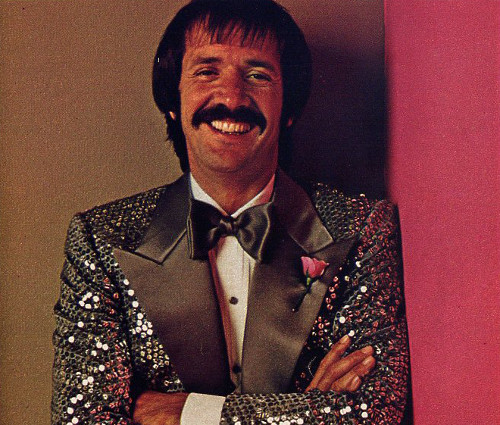
Copyright © TV Guide, 1974 [5]
In his review of the series, Bruce Vilanch of The Chicago Tribune wrote “it is a queasy mixture of failed seriousness and failed failure” that tried to mix big laughs with serious artistry and couldn’t [14]. The Sonny Comedy Revue aired from 8-9PM, meaning that by the time it started its competition on CBS and NBC (Apple’s Way and The Wonderful World of Disney) were half over, having started at 7:30PM. The series premiered on September 22nd and was off the air after 13 episodes, the last of which aired on December 29th.
Works Cited:
2 “In Brief.” Broadcasting. 9 Sep. 1974: 10.
3O’Connor, John J. “TV: ‘Mama’ and ‘Darrow’ Offer Glimpse of Season.” New York Times. 4 Sep. 1974: 83.
4 Excerpted in Broadcasting (“Prime-time viewing: the critics’ choices,” 16 Sep. 1974, Page 17).
5 Ibid.
6 Brown, Les. “ABC Cancels Three More Prime-Time Programs.” New York Times. 14 Nov. 1974: 95.
7 Excerpted in Broadcasting (“Critical comment, cont.,” 23 Sep. 1974, Page 20).
8 Excerpted in Broadcasting (“Critical comment, cont.,” 23 Sep. 1974, Page 23).
9 “ABC Cancels Two Series And Shifts Some Programs.” New York Times. 10 Oct. 1974: 93.
10 Excerpted in Broadcasting (“Critical comment, cont.,” 23 Sep. 1974, Page 23).
11 “ABC Cancels Two Series And Shifts Some Programs.”
12 Excerpted in Broadcasting (“Critical comment, cont.,” 23 Sep. 1974, Page 26).
13 Excerpted in Broadcasting (“The critics, the end,” 30 Sep. 1974, Page 21).
14 Ibid.
Image Credits:
2 From TV Guide, September 7th, 1974, Page 49.
3 From TV Guide, September 7th, 1974, Page 64.
4 From TV Guide, September 7th, 1974, Page 30.
5 From TV Guide, September 7th, 1974, Page 33.
Originally Published August 20th, 2003
Last Updated April 20th, 2018

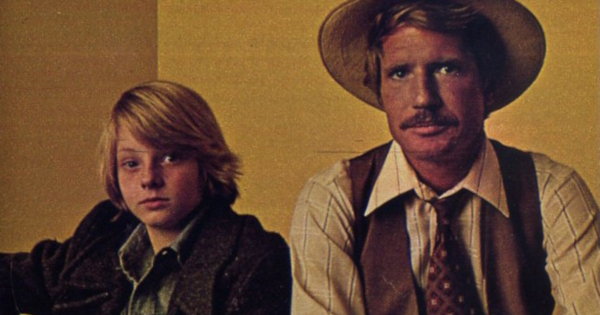



I’m going on memory here, but I seem to remember that after the NAKIA backdoor pilot aired in the spring, the series got entangled in a legal dispute with the owners of the BILLY JACK franchise over its similarities. Between the spring and its debut, the series was re-tinkered substantially to distinguish it from Mr. Tom Laughlin’s iconic character.
The NAKIA backdoor did rather nice in its backdoor airing on Wed.Apr.17/1974 garnering a 17.6HH/31%, but the series fell off quite a bit in its Saturday night timeslot, averaging 11.9HH.
“Kodiak” aired in the same Friday time slot as “The Brady Bunch” (for five previous seasons!). If ABC had known how quickly “Kodiak” would have been cancelled, they probably would have kept the Bradys for another season!
Poor “Kodiak” never stood a chance. I think “Sanford and Son” was averaging close to a 50 share in that timeslot. With so many viewers tuned into NBC, there weren’t many left for ABC and CBS to divide up.
Kodiak only had a 9.9 rating in its timeslot, ranking 83rd out of 84 programs airing that season. Planet of the Apes (in the same timeslot) did not fare much better, ranking 67th with a 14.8 rating. Sanford and Son was the #2 show on TV that season with a 29.6 rating.